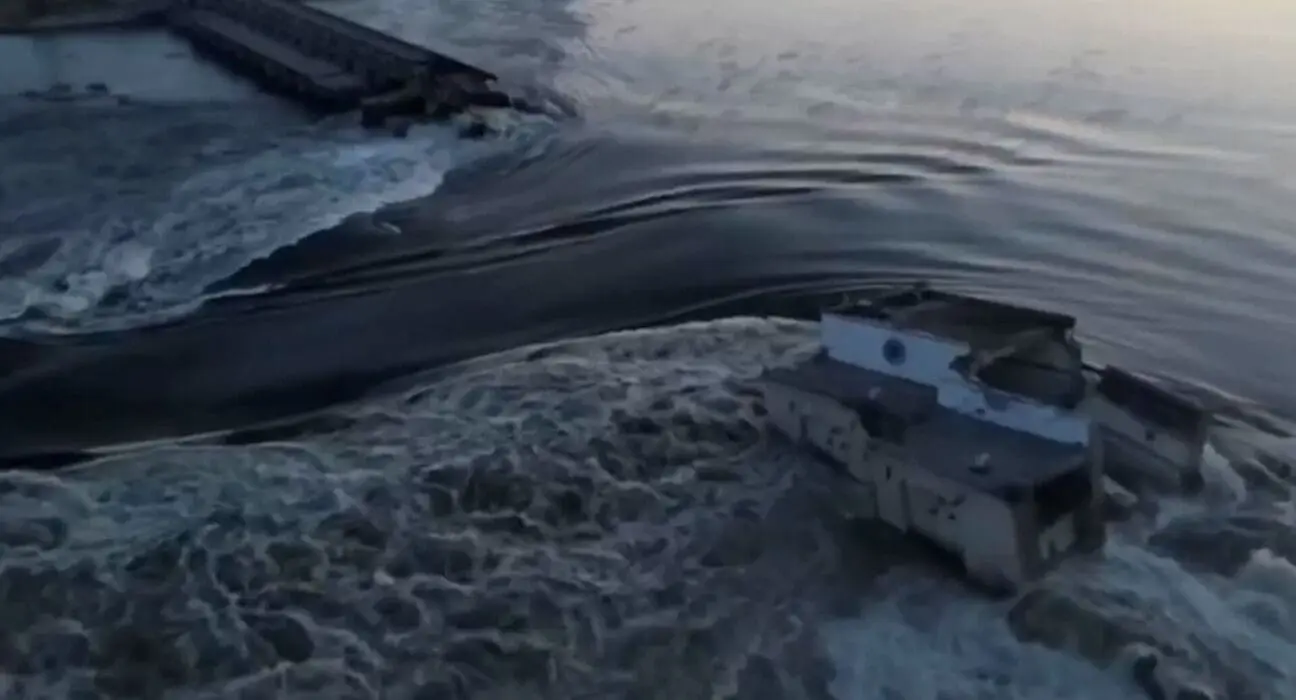A huge kakhovka dam has been destroyed in the Russian-controlled area of southern Ukraine, causing a flood.
The Ukrainian military accuses Russia of blowing up the dam, while Russian officials blame the Ukrainians.
Communities in the surrounding areas are currently being evacuated due to fears of catastrophic flooding.
So far, we know the following.
What is the location of the kakhovka dam?
It is located in the city of Nova Kakhovka in Ukraine’s Kherson region, which is currently occupied by Russia.
Located along the Dnipro river, which runs from the north of the country to the south, it is one of six dams built during the Soviet era.
According to Reuters, it’s huge and holds the same amount of water as Utah’s Great Salt Lake.
How did this happen?
On social media this morning, there are images showing a massive breach in the dam, with water already flooding downstream toward Kherson.
Flooding is not yet clear, but depending on how large the breach is, it could be devastating.
In Kherson, less than 50 miles downstream, officials have warned residents in low lying parts of the city to seek higher ground for shelter.
Oleksandr Prokudin, the head of the Kherson region, told Ukrainian TV this morning that eight villages had already been flooded, with more expected.
According to him, the authorities were evacuating residents by bus and train, and 16,000 people were in a “critical zone”.
What is the reason for its attack?
Ukraine’s military has accused Russia of deliberately blowing up the dam, but the cause of its breach is not known. It makes sense that Moscow feared Ukrainian forces would use the dam road to cross the river into Russian territory, as part of a counter-offensive.
According to Russian-installed officials, the dam itself was not destroyed by shelling, only the upper part of the plant.
The report has not yet been verified either Ukraine’s or Russia’s claims
There are a number of purposes served by the dam.
It holds back a vast reservoir that supplies water to a host of communities upstream, meaning people’s supplies could be affected.
The reservoir also provides cooling water to the Russian-controlled nuclear power station at Zaporizhzhia, around 100 miles upstream.
IAEA said there was no immediate nuclear safety risk, but it was monitoring the situation.
In addition, the dam is a vital water channel carrying water from the Dnipro to Russian-occupied Crimea.
In 2014, Ukraine blocked a channel carrying water from Nova Kakhovka, resulting in a water crisis on the peninsula.
After last year’s full-scale invasion, Russian forces reopened the channel. However, without the dam, dropping water levels could once again impede water flow.
Since the invasion, Russia has attacked several dams throughout Ukraine, causing widespread flooding and disrupting power supplies.
Also Read:
